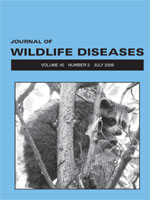Poisoning of waterfowl due to ingestion of lead pellets is a worldwide problem in areas that are subject to hunting. No studies have assessed exposure of waterbirds to this heavy metal in Argentina, in spite of intense hunting activity, and the fact that only lead ammunition is commercially available. The objective of this study was to evaluate duck exposure to lead by examining gizzard and bone samples collected from 30 wild ducks, 16 Rosy-billed Pochard (Netta peposaca), and 14 Fulvous Whistling-Duck (Dendrocygna bicolor), provided by hunters in northern Santa Fe Province, Argentina, in July 2007. Radiographs, followed by dissection of the gizzards, showed that 31% of the Rosy-billed Pochards and 29% of the Fulvous Whistling-Ducks had ingested lead pellets (between one and four per animal). Lead in bone was found at concentrations associated with detrimental health effects. In spite of the small number of samples in this project, these results indicate high levels of lead exposure (both recent and chronic) in these species. This is the first report of a problem in Argentina that could represent a threat to the health and conservation of native aquatic species, their predators, and the wetlands they inhabit.
How to translate text using browser tools
1 July 2009
Recent and Chronic Exposure of Wild Ducks to Lead in Human-modified Wetlands in Santa Fe Province, Argentina
Hebe Ferreyra,
Marcelo Romano,
Marcela Uhart





